Re-post from the ![]() blog
blog
Keyword research. As a blogger, it’s something that you know you need to do for your blog to be successful. Maybe, you even do some keyword research of your own already – if so, great. But perhaps the whole concept of keyword research leaves you confused.
Keyword research is something that starts long before you’re filling in the SEO plugin fields when adding a post. In fact, it is something that should happen before you even start writing. This article will show you why intentional – but not manipulative – use of keywords is so important. Then, it will offer some quick and simple SEO keyword research tips for bloggers.
What Role Do Keywords Play in SEO Today?
Google is improving their algorithm every single day. And with good reason: the number of searches performed increases every year, and 16 to 20% of search queries used each day have never been typed into Google before. Because of this, Google has to work to keep on top of how the world is using their search engine.
A decade ago, keywords were king. Some more opportunistic webmasters noticed that the more times they packed a certain keyword onto a page, the better that page would rank in the search results for that keyword. This made for very hard to read, “keyword stuffed” content. Google punished this behavior with a series of algorithm updates aiming to fight “over-optimization.”
Keyword Research in 2017
These days, Google takes a much more holistic approach to keywords. They are more concerned with the context presented by all the many different words and phrases used in a piece of content than the unyielding presence of one particular keyword. Occasionally, content that ranks well for a certain term doesn’t even contain the exact term searched at all. But Google still excels at matching the context of what you are looking for to relevant information. Optimizing for this is called “topic modeling,” where you build context for your piece of content through the use of a set of interrelated keywords.
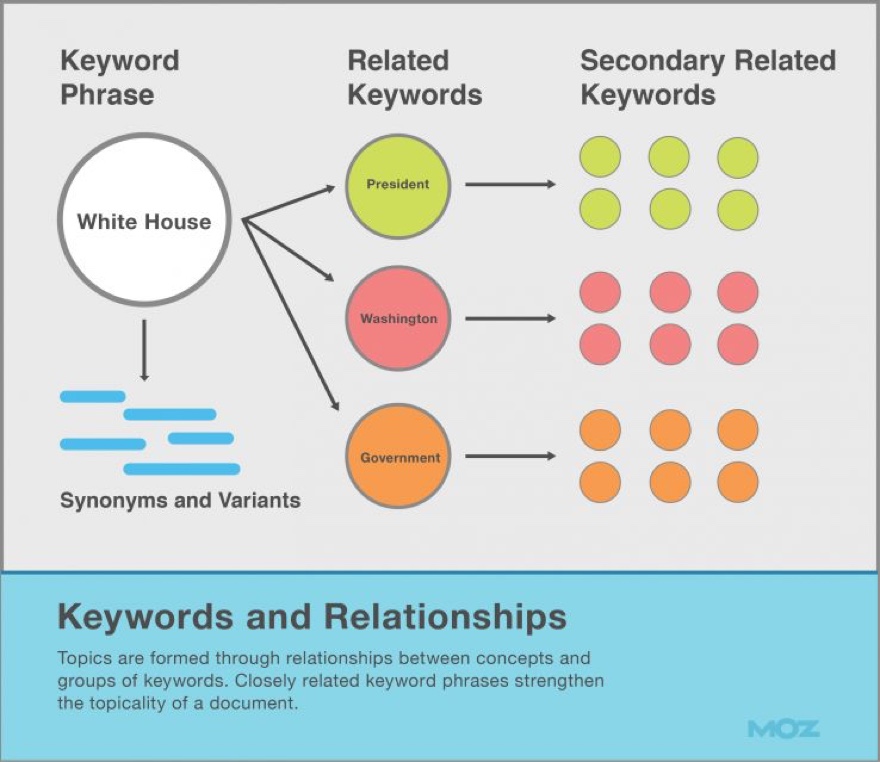
Funny thing is, topic modeling just loops us back to the natural way that we communicate with other people. We don’t just use one keyword; we use a set of interrelated words and phrases that together create the context for what we are discussing.
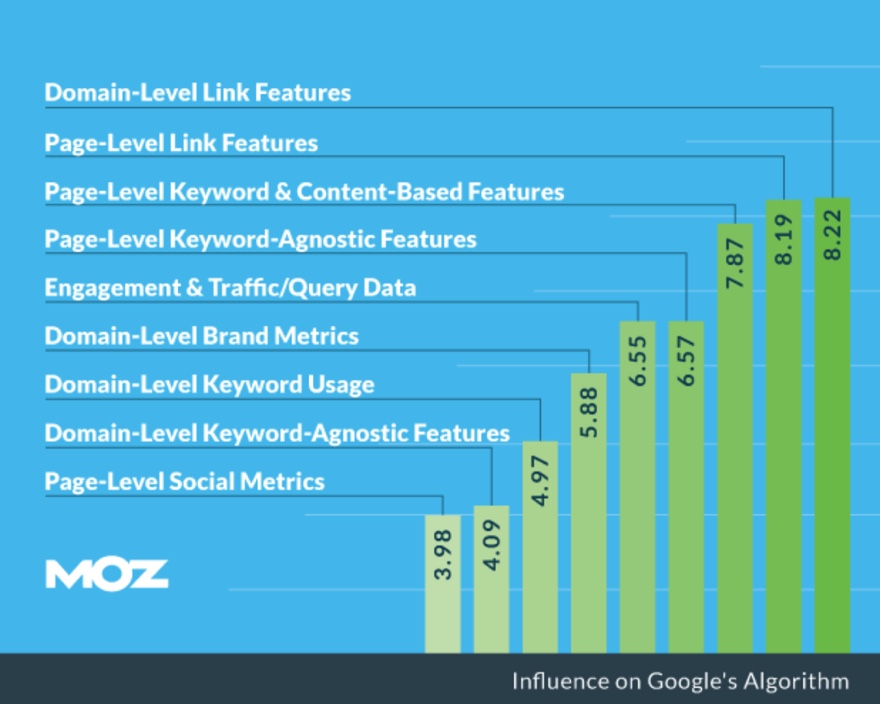
That isn’t to say that individual keywords no longer matter, though. Even in Moz’s most recent search ranking factors study, the SEOs surveyed agreed that keywords were the third most important piece of the search algorithm.
So with that covered, now let’s get to the actual SEO keyword research tips.
What Defines a Good Keyword?
The traditional definition of a “good” keyword is one that receives a high number of monthly searches and low competition from other sites trying to obtain traffic from that keyword. This determination comes from a tool like the Google Keyword Planner, which lists monthly search volume and the competitiveness of the keyword on AdWords.
In practice, however, this may not be what defines a keyword that is good for your particular blog. AdWords competitiveness is not always accurate at predicting how competitive ranking would actually be. And many longer tail keywords won’t even have monthly search volume in Keyword Planner.
Instead, it’s often best to opt for a more personalized definition. A good keyword is something your target audience would be searching for, with existing search results you could reasonably break into. Most keywords you should target are going to be at least two words, often longer. Keep reading to learn how to build up a keyword list, and then pare it down.
Keyword Research: Building Your Keyword List
You don’t need a lot of fancy or expensive tools to build a useful list of keywords. Plus, once you have a narrowed down list, a lot of the work of coming up with topics for blog posts is all done for you.
For now, though, your goal is to make a long list of keywords to target, between 50 and 100. To keep track of your keywords, create a spreadsheet. It doesn’t need to be complicated; a basic Google Sheets document will do.
Which Keyword Research Tool to Use?
Google Keyword Planner is a suitable tool to use, mainly because it is free. Start by typing in the main theme of your blog, which might be one to three words. Let’s say we’re starting a blog about succulents. I’ll search for the keyword “succulents” to start.
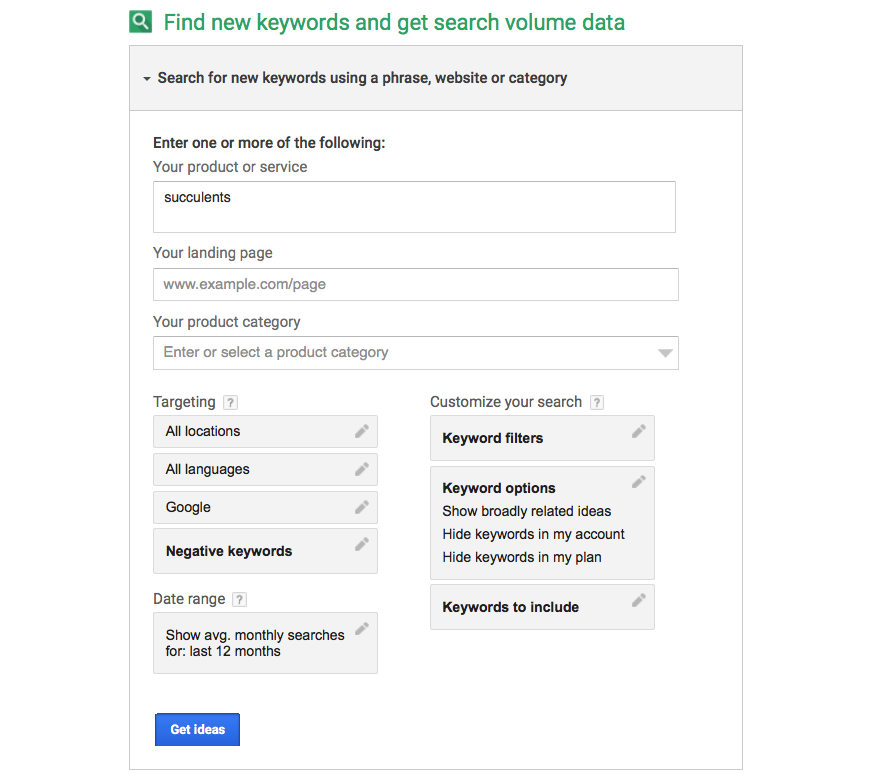
From there, Google suggests some other relevant and very broad keywords, like succulent plants, succulent care, and where to buy succulents. These are still very broad keywords, but succulent care looks good – it has a high number of searches per month and AdWords reports low competition.
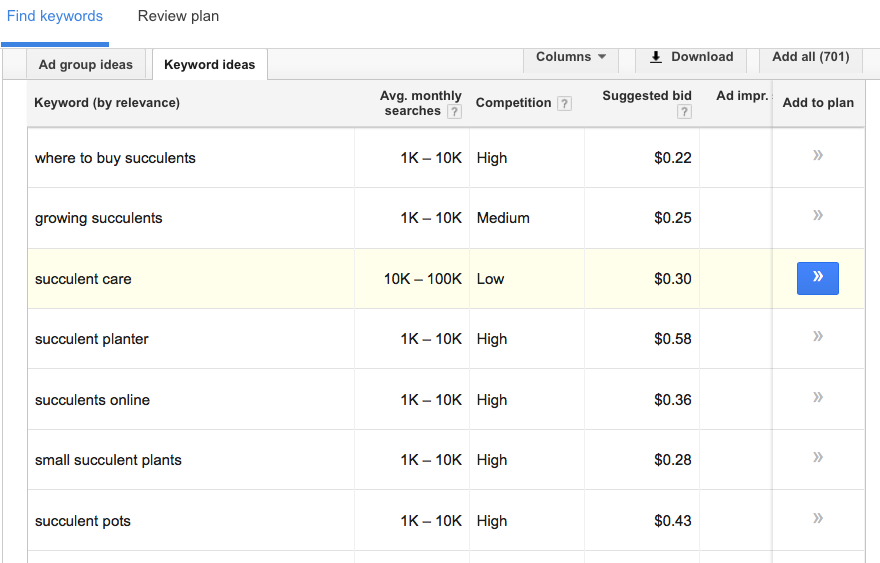
As you find good potential keywords, list them in the first column of your spreadsheet. List the monthly search volume in the second column. Keep scrolling through the results and adjusting the search as you think of more search terms. You can sort Keyword Planner by competition to find other strong potential matches that fit the typical high volume, low competition definition of a good keyword. You will probably end up finding a number of variations on the same idea, which is not a problem. Although the competition rating applies to sites using AdWords, it can give a good indication of how competitive the organic search results are.
Once you have a good list of 50-100 keywords, group them by theme. Get specific enough that each group could be its own blog post.
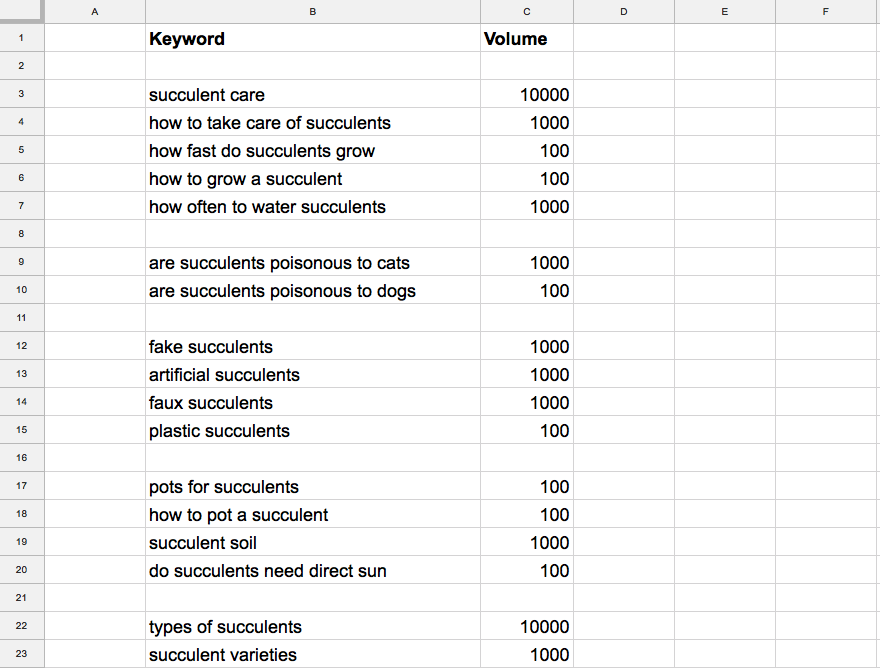
Narrowing Down Your Keyword List
We’re already made good progress – from your list of 50+ terms you probably have enough sets of keywords to create ten or more blog posts. But where do you go from here?
A simple system for judging your keywords such as the one shared by Ryan Stewart in this article is a good option. It is a color-based rating system based on the Page Authority (PA) and Domain Authority (DA) of the top four results for each keyword. To get started, sign up for a free Moz account and install their browser extension.
First, find the DA of your own website using the toolbar. Let’s say your website has a DA of 20.
Next, search Google for each keyword on your list and color-code it based on this matrix. You are looking at the top four results, and ideally for results with a PA of 20 or less and a DA less than 50.
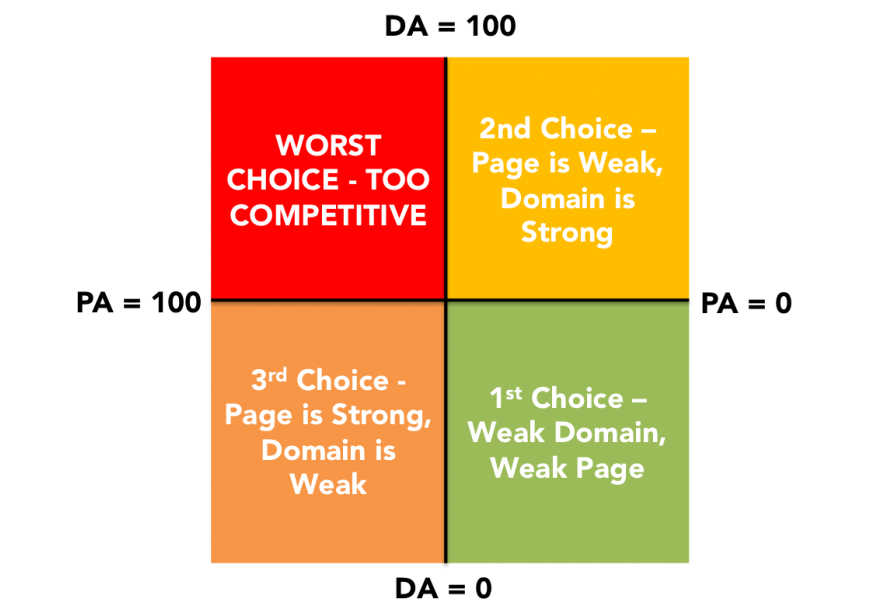
For example, our keyword “succulent care” is looking like an orange one – with a few fairly strong pages from weak domains.
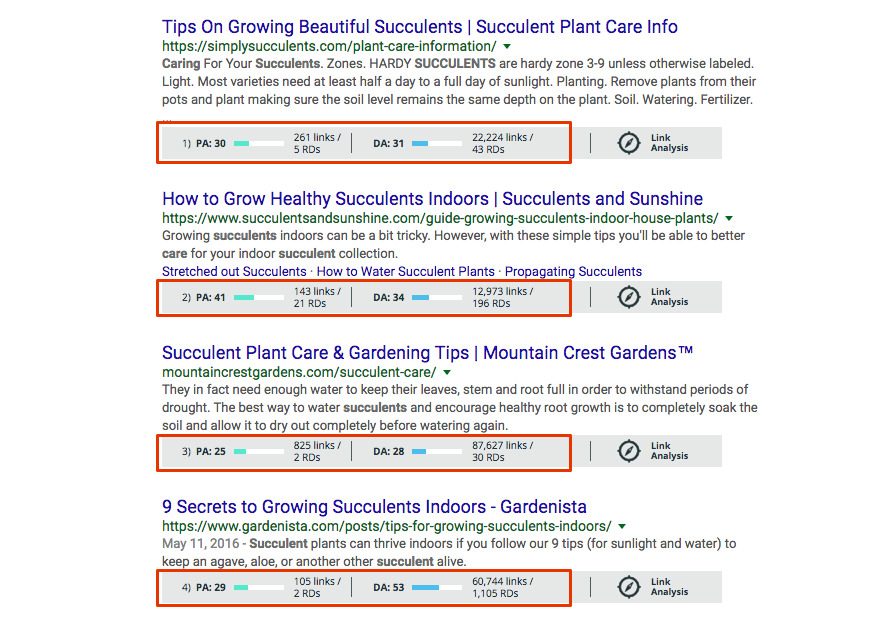
This one, “are succulents poisonous to cats,” is looking pretty good:
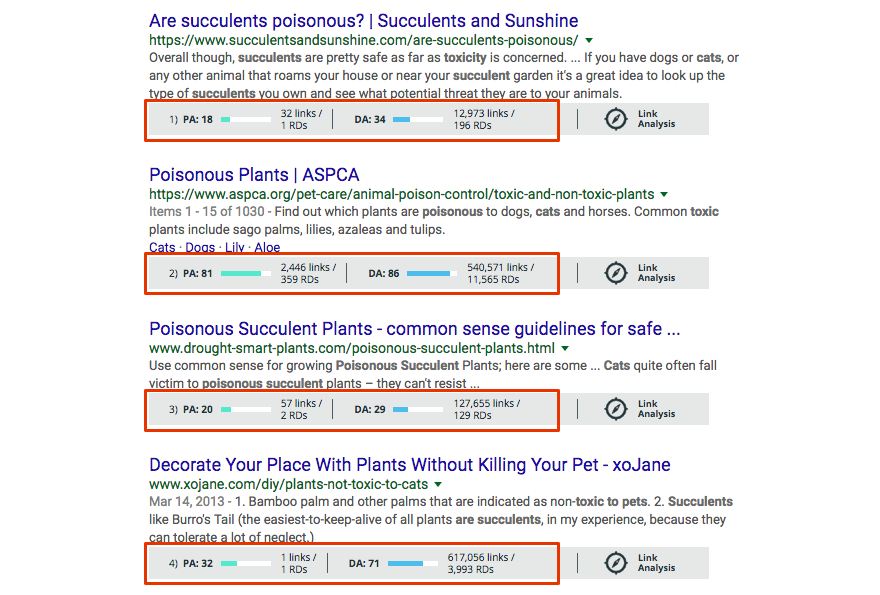
Once you have everything ranked, your list should look something like this:
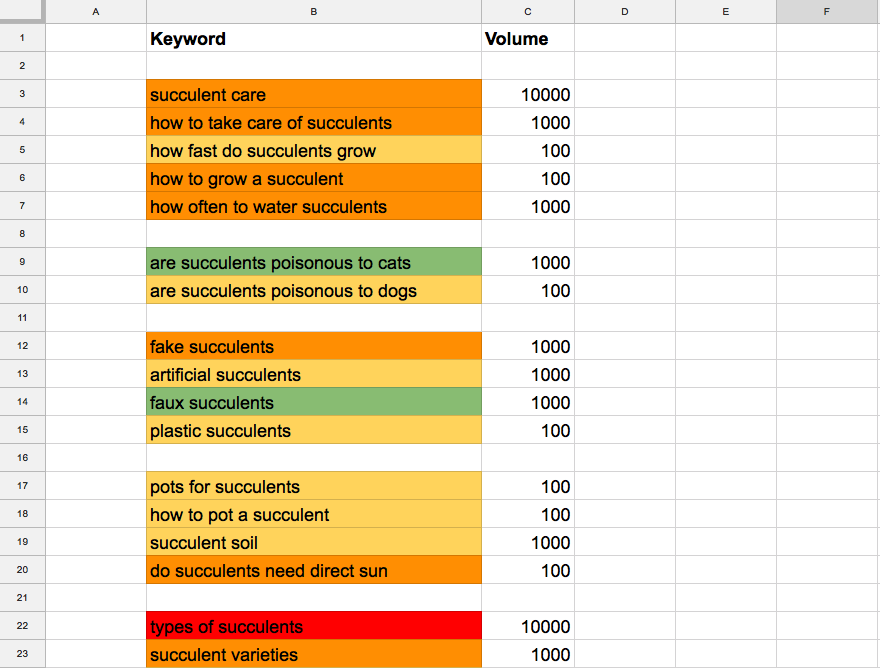
A Core Keyword for Every Post
Essentially, what the colors you end up with in your keyword document tell you is how easy it will be to rank your post on the first page of search engine results. It won’t get there overnight, of course, but if you create a piece of content that is at least as good as the other content that appears in those top four spots, and your DA is comparable to some of the other DAs you see there, you stand a solid chance.
Your next step is to figure out the best keyword of each set, balancing volume with competitiveness, and move it to the top of the set. Some good examples are “are succulents poisonous to cats” and “faux succulents,” which the keyword research is indicating has a strong chance of ranking well.
Use these top keywords to come up with a blog post topic. The top keyword should appear in the title, ideally at the beginning. List this headline in the next column.
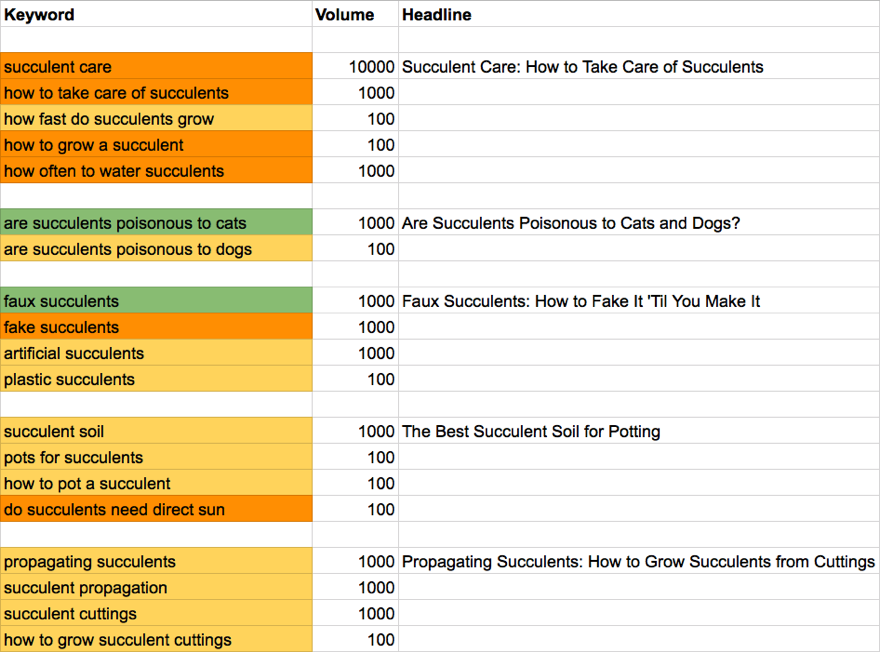
You will want to sprinkle the top keyword throughout the post you write, as well as including all the other keywords on your list once or twice. Don’t worry about keyword density; just use the keywords when you can, where they make sense.
If you use an SEO plugin like Yoast SEO – which you absolutely should – you should also use the top keyword there. The Yoast plugin will offer additional suggestions for optimizing your post.
Final Thoughts
If you follow the guide above, you should end up with a list of at least 50 keywords and ten or more potential blog posts. Some of these potential posts may already exist on your blog, which means that all you need to do is optimize them, tweaking the text to include your set of keywords.
When you run out of sets of keywords, all you need to do is repeat these steps to build a new list. Keyword inspiration can be found at Q&A services like Yahoo Answers and Quora, as well as from browsing relevant articles on Facebook or Pinterest.
